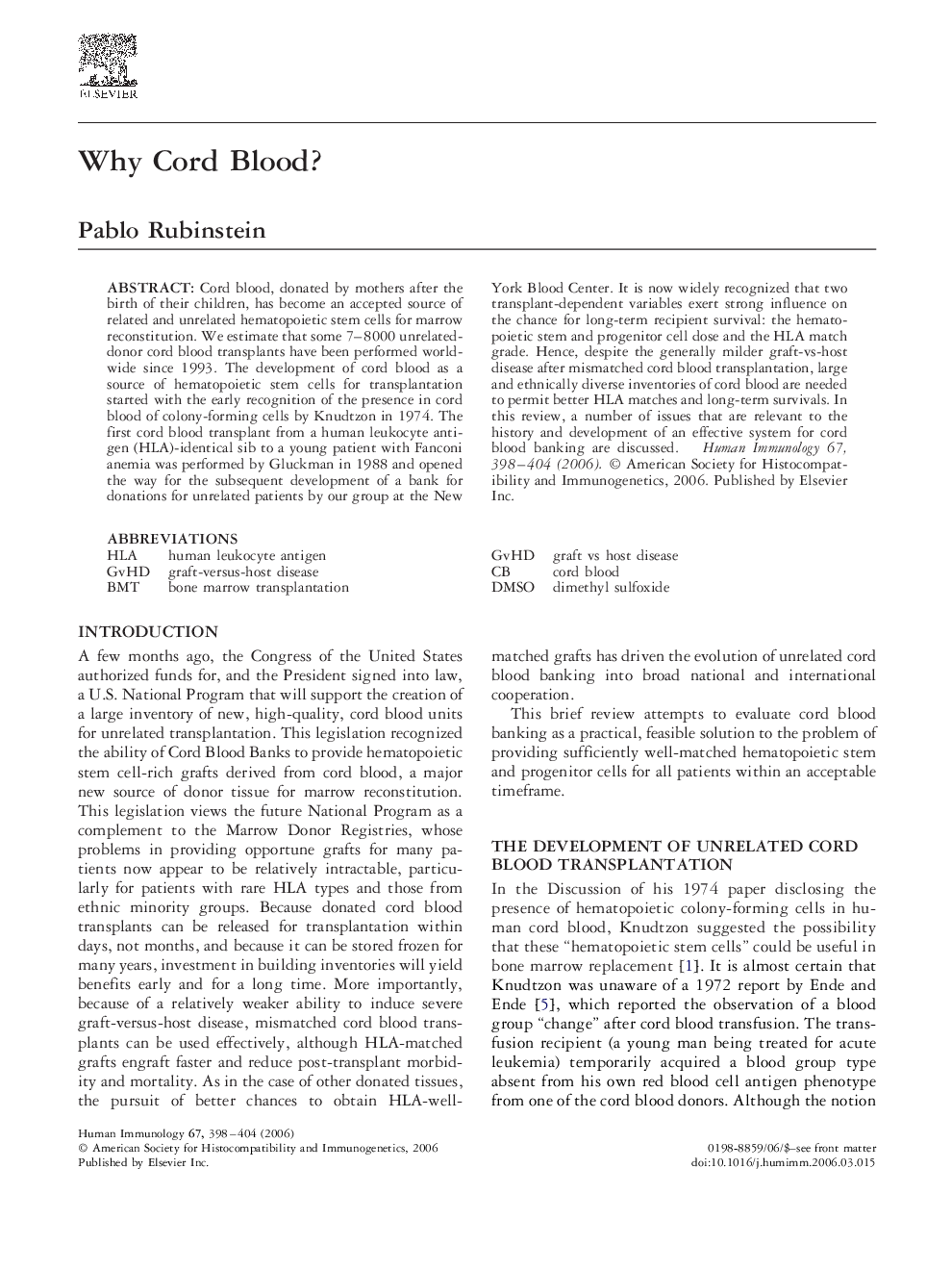| Article ID | Journal | Published Year | Pages | File Type |
|---|---|---|---|---|
| 3352529 | Human Immunology | 2006 | 7 Pages |
Cord blood, donated by mothers after the birth of their children, has become an accepted source of related and unrelated hematopoietic stem cells for marrow reconstitution. We estimate that some 7–8000 unrelated-donor cord blood transplants have been performed worldwide since 1993. The development of cord blood as a source of hematopoietic stem cells for transplantation started with the early recognition of the presence in cord blood of colony-forming cells by Knudtzon in 1974. The first cord blood transplant from a human leukocyte antigen (HLA)-identical sib to a young patient with Fanconi anemia was performed by Gluckman in 1988 and opened the way for the subsequent development of a bank for donations for unrelated patients by our group at the New York Blood Center. It is now widely recognized that two transplant-dependent variables exert strong influence on the chance for long-term recipient survival: the hematopoietic stem and progenitor cell dose and the HLA match grade. Hence, despite the generally milder graft-vs-host disease after mismatched cord blood transplantation, large and ethnically diverse inventories of cord blood are needed to permit better HLA matches and long-term survivals. In this review, a number of issues that are relevant to the history and development of an effective system for cord blood banking are discussed.
